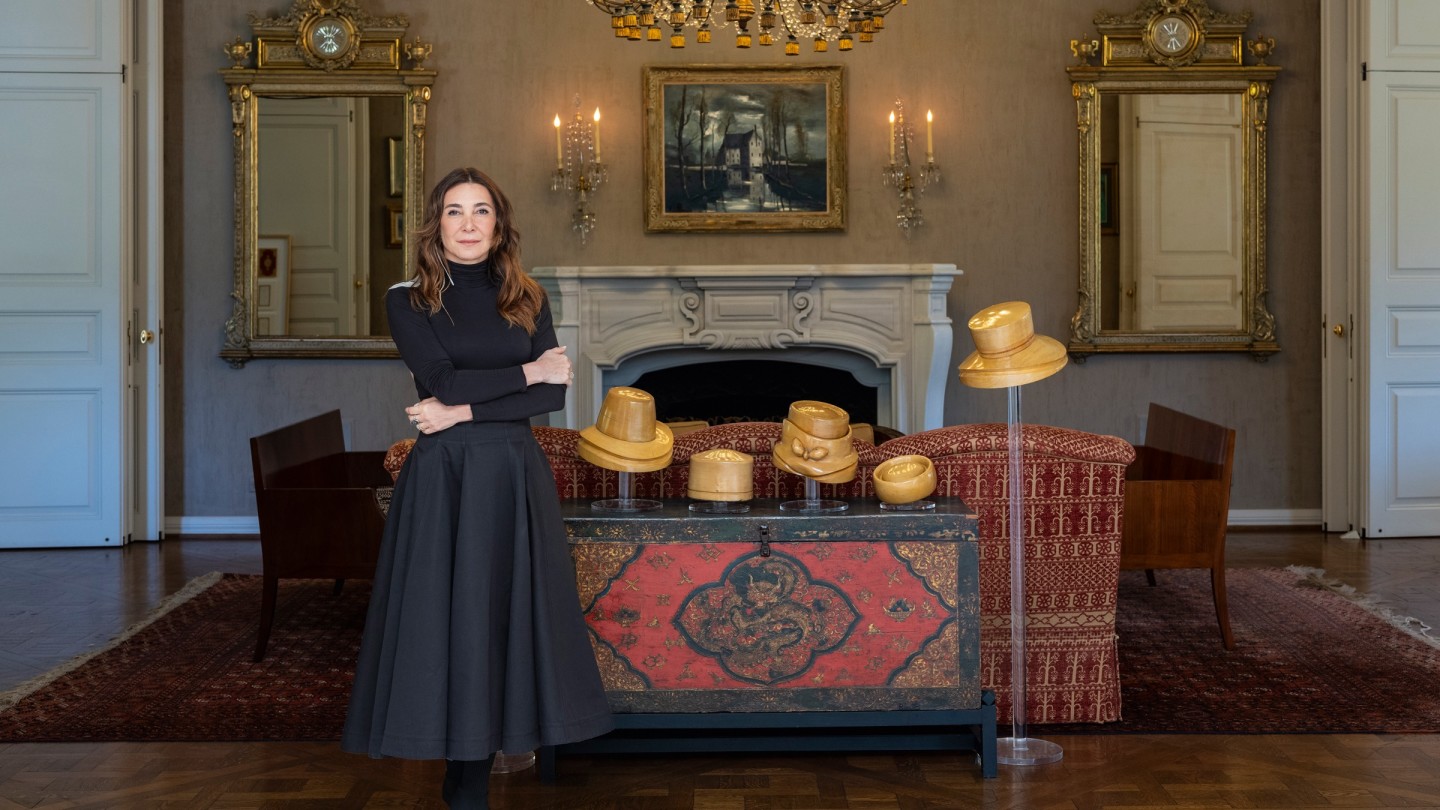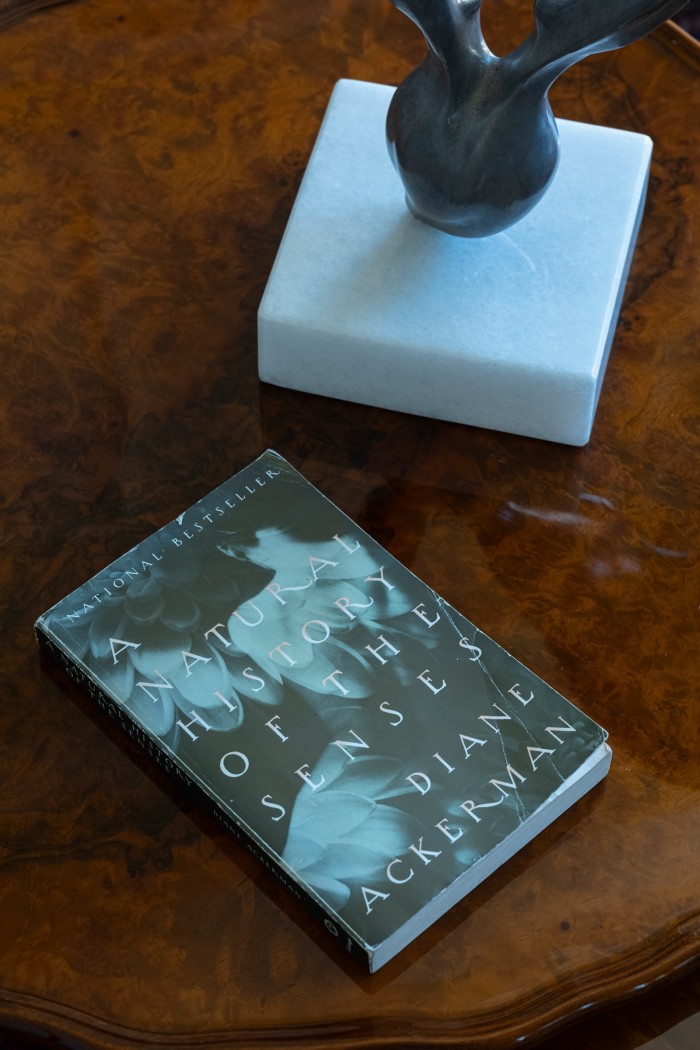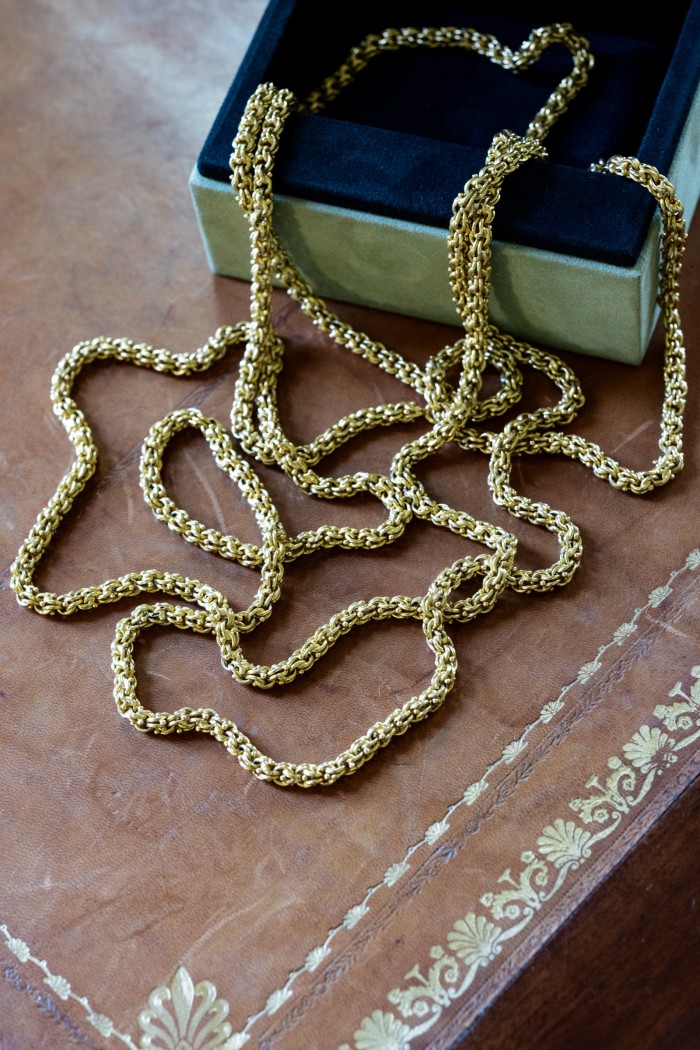Artist and philanthropist Vuslat Doğan Sabancı talks taste

Roula Khalaf, Editor of the FT, selects her favourite stories in this weekly newsletter.
My personal style signifiers are feathers, which I wear on accessories – hats, belts and necklaces – or clothing. My wedding gown was made of white feathers. I feel like I have the guardianship of nature when I wear them; that I’m connected to the spirit world. I have a beautiful pair of feathered earrings that I got from Etro last year, but generally I prefer the ones I find myself in nature.
The last thing I bought and loved was a kiln for my studio. I enjoy experimenting with different materials – bronze and marble – but I always come back to clay. It has its own language – you can’t dictate to it.


My journey to philanthropy was inspired by my passion for gender equality, specifically female empowerment. I found working with grassroots organisations, being on the ground and having contact with people to be the most valuable form of involvement. That’s where my journey to establishing Vuslat Foundation began. We recently launched its podcast, The Generous Listener, which explores the possibilities of what listening can bring to different fields, from environmental crisis to social division. When you are able to listen generously and create genuine connections, power dynamics change completely. All hierarchies diminish.
Recently we have been working in the south-east of Turkey in response to the February earthquakes. We have created a generous listening programme where a facilitator creates a space for women to listen to each other with the aim of building self-confidence and helping with feelings of loneliness. Unless we empower people, instil hope and develop resilience, no support that is provided will be sustainable.
I have a collection of 13th-century Seljuk ceramics. I admire the refined artisanship, the beauty of the designs and the green glaze that remains in excellent condition. You have to get permission to take them out of Turkey and every month a public official from the antiquities board comes to verify them. I feel privileged to be safeguarding these ceramics for the next generation.

My first charitable hero was Meliha Kantek, my maternal grandmother. She didn’t have much money to give but she achieved so much through compassion and being attentive to people’s needs.
The best book I’ve read in the past year is A Natural History of The Senses by the poet and naturalist Diane Ackerman. She has a beautiful writing style and really inspires you to go into your senses.
The thing I couldn’t do without is the ritual of having a Turkish coffee in the morning, accompanied by sparkling water with a leaf of mint in it. Now there are machines that do it for you, but I like the traditional way of cooking it on the hob. Start with a strong flame and then go lower; it takes about seven minutes.


The works of art that changed everything for me were the renaissance sculptures I saw when I first visited Florence in my early teens. Having been raised in a society that possessed an Islamic understanding of art, it was probably the first time I saw figurative sculptures. Until then my only experience of marble was when my grandmother used to take us to Turkish hammams: I admired the tactile feeling of it beneath the water. Seeing it for the first time in those sculptures completely transformed my understanding of the material.
The best souvenir I’ve brought home is a Vietnamese trunk I found at an antique bazaar in Ho Chi Minh City almost 40 years ago. I fell in love with its colours and textures: it’s embroidered in vivid green and scarlet patterns. Instead of putting things in it, I exhibit objects on it. Currently it’s showing my collection of 18th-century hats.

My favourite location is the Yahya Efendi Tomb near Ortaköy, Istanbul. Sufi cemeteries have the most intricate tombstones with amazing calligraphy on them. There are cats everywhere, and it feels like a doorway where you can connect with other worlds; the cats are the messengers.
My favourite app is Simply Piano. I downloaded it last year when I decided to learn how to play. It alerts me when I’ve made a mistake or missed my practice times, and keeps a log of my progress. I’m loving it.
The best gift I’ve given recently is a marble sculpture I made for Pope Francis, whom I visited as part of the Leaders For Peace group.

And the best gifts I’ve received are the articles of association of an Ottoman foundation from 1748 that worked on building public goods. To my delight, it was called Vuslat Foundation and was founded by a woman. It felt like continuity with a much older organisation. My friend framed the originals as well as the translations to modern Turkish and English; they hang proudly on the wall in my office.
The place that means a lot to me is Büyükada, an island off Istanbul. In my early twenties I’d go there with my family every summer. It’s a place where I can look at the chaos from the outside – like being on a balcony. It’s also the one place in the world that never changes: the sound of seagulls, the taste of lemon and cherry ice cream.

In my fridge you’ll find eggs, oat milk, goat’s cheese, berries, and Ruinart Blanc de Blancs. I love opening a bottle of champagne to cheer me up on bad days.
The one artist whose work I would collect if I could is Louise Bourgeois. She was a revolutionary artist, of course, but also a courageous activist and incredible feminist.
The beauty staple I’m never without is a dry brush, which I use before my morning shower. I start from my toes and go up to my neck, always in the direction of my heart. It makes my skin softer, tighter and smoother, and it’s good for enhancing circulation.


My style icon is Georgia O’Keeffe. She was both powerful and elegant – two things that were difficult to bring together at that time. She designed a lot of her own clothes, as well as wearing designers such as Pucci – pieces with clean lines, natural fabrics and minimalist ornaments.
The last music I downloaded was Orange Blossoms by JJ Grey & Mofro, an American southern rock band that I’ve been listening to a lot lately. It makes me feel like I’m on a road trip, driving past beaches and enjoying the ride. It’s relaxed but also fun.
An indulgence I would never forgo is spontaneity. When my son was little, we used to play a game called “stealing a day from life”. We’d take turns to pick an experience and drop everything. Over the years we’ve accumulated the best memories. The first time we played it we packed and took the first flight to Antalya in the south of Turkey. We did things that we would never usually dare to think of – paragliding and all kinds of crazy. What made it so special was the excitement of doing it spontaneously.
The last item of clothing I added to my wardrobe was a jersey dress by Les Benjamins, from the Horse Of The East collection. It’s just so easy to wear. The designer brings local Turkish patterns to streetwear and makes them super-cool. I also have a beautiful ruby red kaftan by him.

My beauty and wellbeing gurus are facialist Dr David Jack in London – I use his morning and night creams – Shawna Cordell of Cordell Fitness in New York, and bodybuilding champion Orhan Yilmaz in Istanbul; I train with him four times a week. My master in movement therapy is Diana Jaramillo.
I’ve recently rediscovered my relationship to my body and senses through movement therapy. I’m trying to hack patterns my body has developed over the years and find new ways of expression. I started with a practitioner, but now most of the time I practise by myself. It’s liberating.
My favourite room in my house is the conservatory. I especially like the left corner, where I have my morning coffee; it feels intimate and secure. I can see the changing colours of the garden there, and the beautiful linden tree. It’s also where I keep my latest works of art.

In another life, I would have been a war journalist. Being in difficult places – observing and telling the news from different perspectives – has always intrigued me.
An object I would never part with is my grandmother’s gold chain. Regardless of where I am in the world – either alone or in the crowds – this chain connects me to where I belong. It inspired an installation called Umbilical Cord of Life in my last exhibition at Baksı Museum. I love it because I carry it on my body.
Art of Emanet by Vuslat Doğan Sabancı will be published by Distanz in 2024

Comments